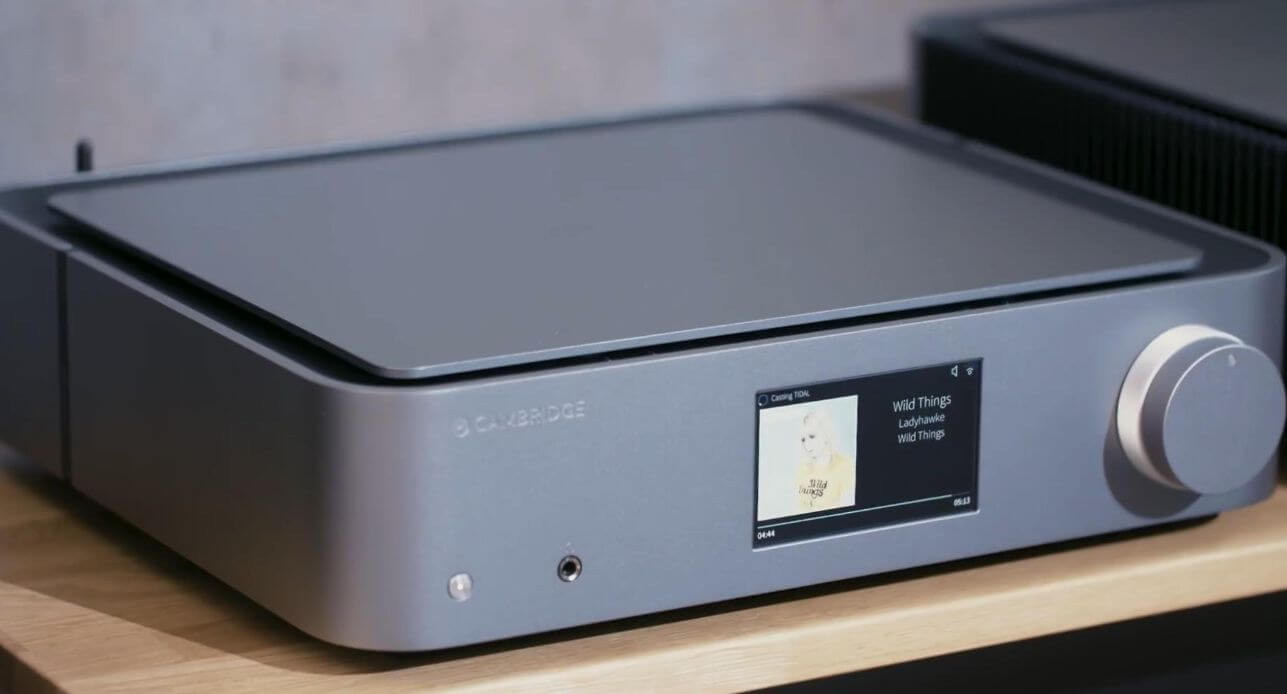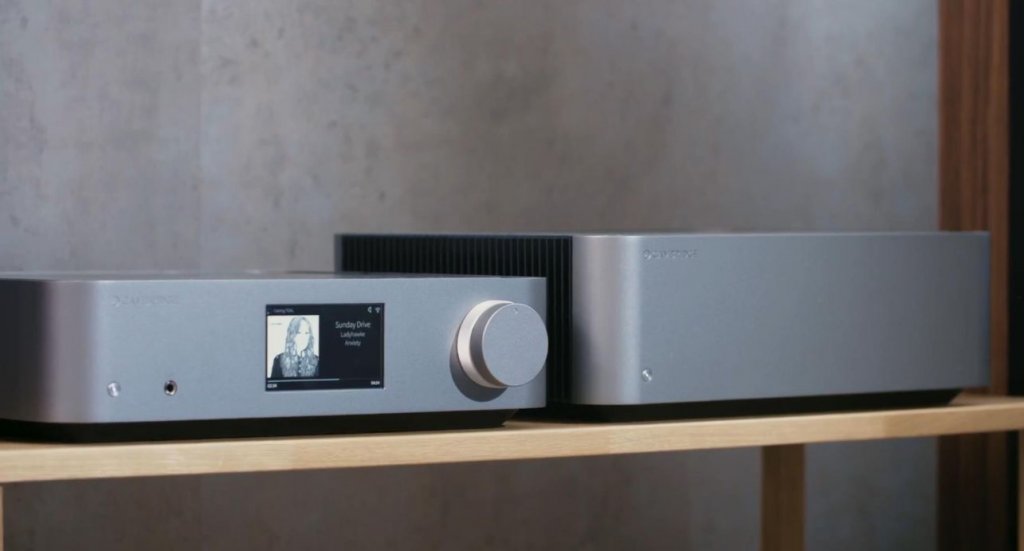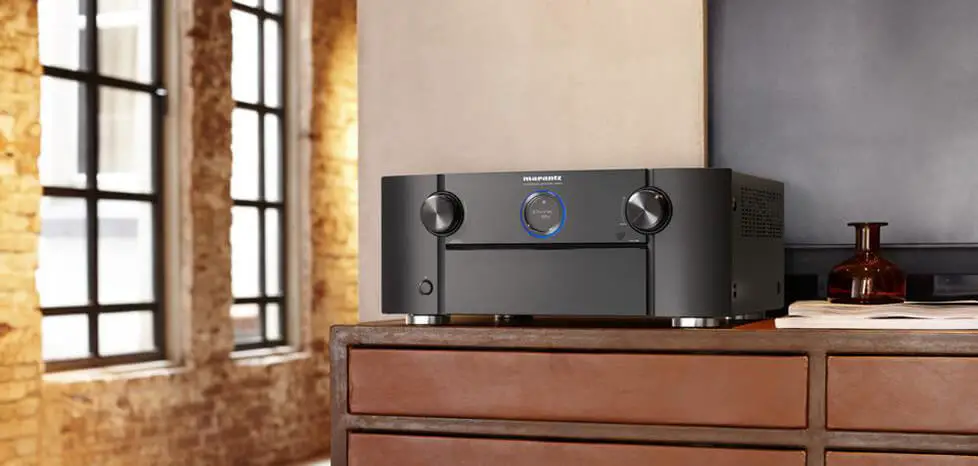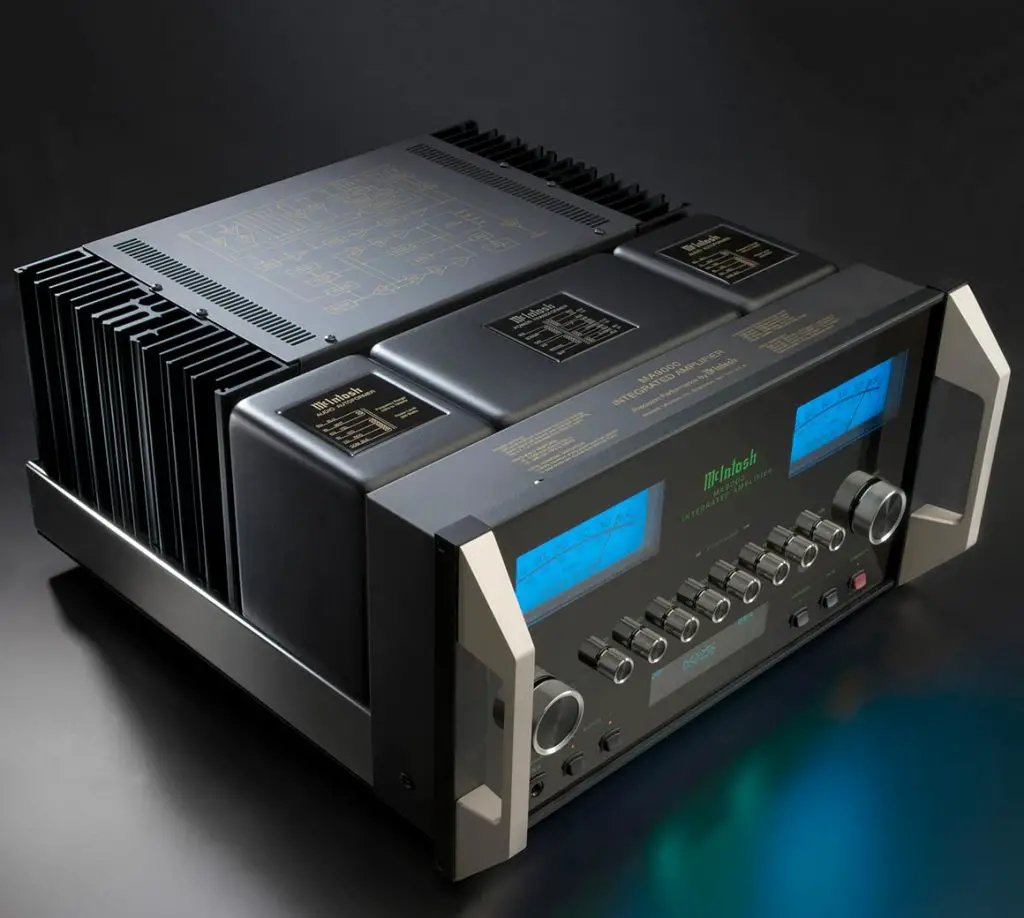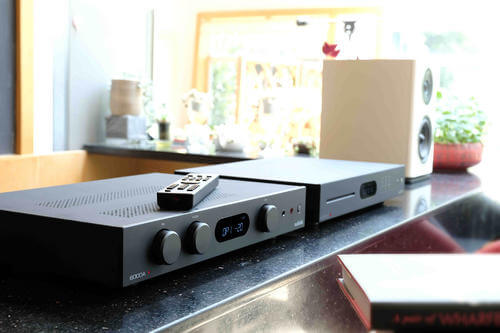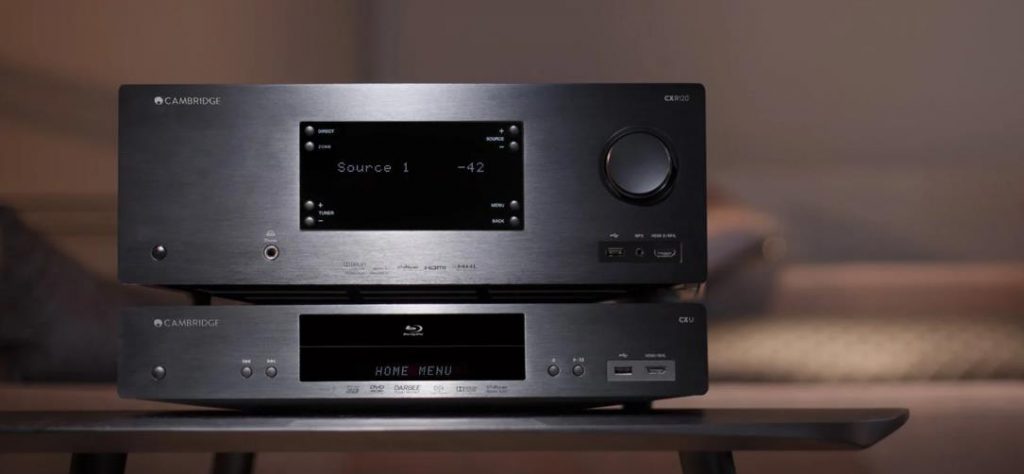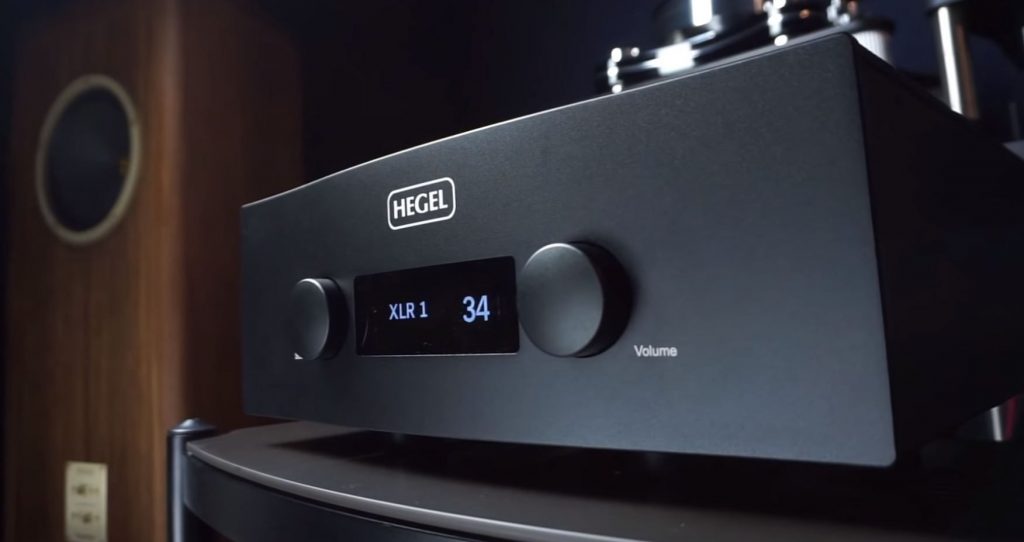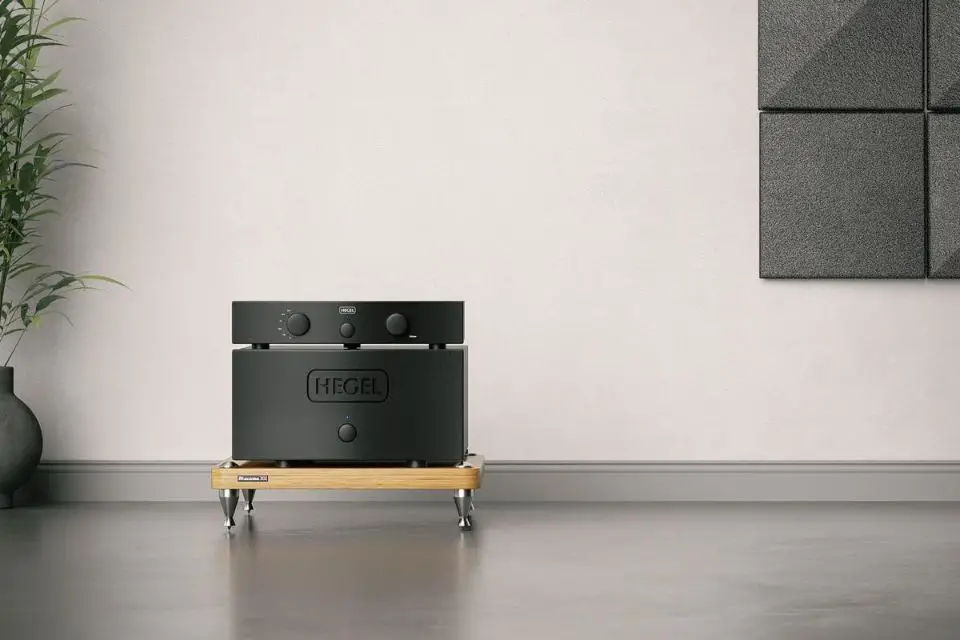Receiver vs Amplifier Vs Preamp
Which term do you use to describe your audio system? A receiver, an amplifier, or a preamplifier? If unsure, have you ever wondered what the difference is between them all? This article will discuss the differences between a receiver, an amplifier, and a preamplifier.
What makes an audio system?
To understand what each of these components do individually, we need first to understand the function of all audio systems. In a nutshell, a standard audio system is merely a device that contains electronic circuitry to play music from its source to drive speakers which provide sound output.
To do this effectively, audio systems usually consist of three main parts – a source (such as a CD or DVD player), an amplifier, and one or more pairs of speakers. The role played by the different components results in us referring to such devices as receivers, amplifiers, and preamps, respectively.
The role played by these three components can be broken down into the following:
Compact audio separates system will typically consist of:
- A CD player or network music player can decode audio files, so they are output as analogue signals by either coaxial, optical or RCA connectors.
- A stereo amplifier receives analogue signals from the CD source component at line level. It amplifies them, so they are strong enough for the preamplifier/receiver to process into signals that drive speakers at a higher power level.
- A preamplifier that receives analogue signals from the CD source component and functions as volume control, tone control and input selector so it can be used to pick and choose between different sources such as:
i) Another type of media player (such as a streaming device or satellite radio receiver).
ii) Cable TV box.
iii) PC or gaming console connected via HDMI or stereo cinch cables.
iv) Record player with built-in phono preamp. - A multi-channel home cinema amplifier drives five speakers(or more) plus a subwoofer in surround sound. This is not used when listening to music, only when watching movies with five-channel surround sound.
- Speakers which convert the electrical signals back into acoustic energy (sound).
What is a receiver?
An AV receiver is a self-contained “home theater in a box.” It usually includes five or more surround sound speakers with built-in tweeters, as well as an amplifier to drive those speakers with up to nine channels (7.1 surround).
Today, most receivers also include some “digital decoder,” required for the latest high definition surround codecs like Dolby TrueHD and DTS-HD Master Audio. On top of all that, most modern receivers will decode practically every digital audio format available like MP3, WMA, FLAC, and even Apple Lossless files.
The problem is that these days, the term AV receiver has become a bit of a misnomer since many receivers do not have a built-in AM or FM radio tuner. So, if your goal is to buy a receiver because you do not have a separate stereo system and would like to wire all of your music sources into it (CD player, iPod dock, satellite radio), make sure the receiver you select has an AM/FM tuner.
If not, look for a dedicated stereo preamplifier without any surround features, which will provide better sound quality than a comparable AV receiver.
What is an amplifier?
An amplifier refers to a device solely meant for driving speakers. It does not have an input connected to receive signals from other devices such as media players or cable boxes. Instead, all inputs are hardwired to the speaker terminals. Therefore, an amp will only function when combined with its dedicated source device (such as a CD player). That makes up for the lack of an input source by having its volume knob.
What is a preamplifier?
A preamplifier is an electronic amplifier that converts a very low-power signal into a higher power signal. For example, preamplifiers feed low-level signals, such as those from a microphone or musical instrument pickup, into a higher-level circuit, such as a power amplifier. The two critical parameters of any preamplifier are its gain and its.
The signal from the source (e.g., microphone) first goes through a buffer amplifier before reaching the actual preamplifier circuits. This stage determines how much of the source signal gets fed to the actual preamplifier circuitry and thus how much amplification will occur there.
However, unlike a receiver, it does not contain any amplifier sections to drive speakers even separately. That means all inputs must be hardwired to the speaker terminals, and there is no volume knob for an amp-mode or power-amp mode which only works when connected to its dedicated source device (such as a CD player).
What is a power amp?
A power amp refers to a device solely meant for driving speakers, which means it does not have an input connection capable of receiving signals from other devices such as media players or cable boxes.
Instead, all inputs are hardwired to the speaker terminals. Therefore, a power amp will only function when combined with its dedicated source device (such as a CD player). That makes up for the lack of an input source by having its volume knob.
However, it differs from an amp because it does not include any preamplification or tone control circuitry. That means you do not get volume controls on the power amp (which would be useless without a preamp), and there is no way to adjust the bass/mids/treble of your speakers like you can with an amp combined with a good preamp.
Does a receiver contain an amp?
Yes, all AV receivers contain an amplifier to drive the speakers. However, the quality of that amplifier varies wildly between models. The more expensive/better-sounding receivers almost always have separate preamp outputs for each surround sound channel, which means you can use a separate high-end amplifier to drive your speakers.
This is actually how most very high-end home theatres are configured. Many audiophiles insist upon higher fidelity amps than what is typically built into a receiver concerning current technology like Class D amplification (most AVRs utilize this type of amplification).
It should also be noted that virtually all modern receivers decode Dolby Digital and DTS surround formats natively, which no longer requires them to “pass” the signal through the amplifier section. However, many expensive and high-end receivers will still offer individual preamp outputs and amplifiers for each channel, a popular feature on high-end home theatres.
Do I need an amplifier in my home theatre?
Is it indispensable to use an external amp? What types of products can benefit from using one? Are there specific features that should be found in these amplifiers? Finally, if I decide to purchase an amp for my system, what features should I look for?
Let’s first look at the benefits of external amplification, and then we will answer some of those questions. An amplifier is best thought of as an electronic device that converts electricity into sound, just like a speaker or radio. The main difference is that the signals from an amplifier are much weaker than those from your cable box, so they need to be boosted before being passed on to speakers.
For example, a home theatre system relies on amplified sound to power its speakers correctly. However, if you used unamplified lines from another source, such as a CD player (like with our Cheap Home Theater: Part 2: Analog One article), you would find that audio levels were very low and difficult to hear.
A simple power amplifier, which is all that is required to drive your speakers.
But just having an external amp isn’t enough; if you have a 5-speaker(or more) system with one subwoofer, you will find that the subwoofer plays at much higher volumes than any other speaker in your system.
One solution to this problem would be to use multiple amplifiers for each of the five speakers to set at equal volume levels. But even then, it would still require six different power cords running from your A/V receiver or amplifier into your speakers.
That is not ideal, and few people are willing to deal with all that mess. Note that you will need an additional amplifier regardless of whether or not you have a powered subwoofer.
One possible solution would be to use a speaker management system. These systems combine the amplifier and speaker wiring into one convenient package for each zone in your theatre. They can also control other features such as EQ and volume levels based on the type of source material you are playing (such that during scenes with explosions, your speakers won’t blast but will be louder during quieter scenes).
Some models can even automatically adjust speaker volume levels for you based on measurements made by an included microphone, so users don’t need to tweak their sound levels manually. But since we’re talking about external amplifiers here, we will concentrate more on the features, and these devices bring over typical home theatre amps.
Before we go into the different amp features, let’s first discuss why you would want to choose an external amplifier in the first place. They allow for more control over your theatre sound levels without changing any settings on your equipment. For example, you can raise or lower volume levels by as much as 50% from your seating position at the push of a button – no more crawling behind equipment cabinets.
External amplifiers are a good fit for larger rooms where more speakers are desired (typically seven or more). When combined with multi-zone speaker management systems, they also work well, allowing us to put all that power into one convenient package.
Speaker management systems are often required for commercial theatres where different people listen to different programming. For example, someone might like loud explosions during the latest action blockbuster while the boss (who is paying for this theatre!) prefers more subtle scenes. You can make individual volume adjustments based on the source material and content type with speaker management systems.
Some otherwise primary receivers now include external amplification features which allow you to switch your speakers between “Large” or “Small” modes depending on whether or not you use an external amplifier (or even if they are turned off altogether).
That prevents the receiver from overpowering your sound levels with preamp signals that exceed its internal power supply limitations, so you should always run your speakers at their maximum level using only the passive audio input connections. When this option is on, the power amplifier section of the receiver will be disabled, and speakers will be driven only by the preamp signals.
Differences between an amplifier and a preamp
There are many differences between an amplifier, and a preamplifier, one of the most prominent beings is that an amplifier does not have a set gain. In other words, the amplification factor is adjustable.
On the other hand, a preamplifier has a fixed gain setting usually noted as “x” number of decibels. The variable gain is the main difference between a typical home stereo or integrated amp used for listening to music and a preamp typically designed in a high-end audio system used for critical listening.
That can be easily illustrated with two different examples: changing the volume on your TV vs going from channel to channel using your TV’s tuner. If you change the volume on your TV with the remote control, you are adjusting the amplification factor. If you switch from channel to channel, you evolve input gain on a preamp that controls signal level going into an amplifier stage.
The second difference is that a preamplifier will typically have multiple inputs and a single output, while an amplifier will only have one input and many outputs. That makes sense because a given home stereo or integrated amp can play different sources such as CD player, turntable, tape deck etc.
But it can only play one source at a time. A preamplifier designed for use in a high-end system typically has many inputs for different sources, and these sources may be played simultaneously through the main output of the preamp if desired, allowing you to listen to more than one source at a time.
Another difference is that the amplifier will typically have tone controls such as bass and treble, but preamps don’t because they aren’t designed to power speakers directly; they are meant to be used in conjunction with an amplifier.
A preamplifier also may not have volume control or “mute” function like an integrated amp or home stereo will since it has no direct control over the amplification factor of the system for which it is designed. So if you ever need to mute your stereo system (e.g., during phone calls), you’ll need to use the master volume on your integrated amp or home stereo and not turn down your preamp’s volume knob because doing so would change the gain and cause noise in your audio system.
The final difference is that preamps typically have fixed or non-adjustable input impedance, while amps can be designed with fixed or adjustable input impedance. This may seem a bit confusing because you probably think of a preamp as having low impedance since it only has one output.
Still, the fact is that a preamplifier’s internal circuitry is creating an extremely high load impedance on its inputs which causes current to flow into whatever source device(s) are plugged into it. In other words, there is no such thing as an “input source” when it comes to a line-level signal.
Most excellent consumer equipment will use high-quality components for their input stages, so the input impedance is very, very high – probably in the megohm or even gigohm range.
Pros and cons of AV receivers
The AV receiver is the central hub of any home theatre system. It acts as a bridge between your source devices (DVD player, Blu-ray player, etc.) and your speakers. No matter what kind of system you get, they all come with some pros and cons. Let’s look at some of the advantages and disadvantages so you can get an idea of what you’re getting into if you choose to go with one of these units.
First, I’ll start with the good points, then go on to the bad ones:
4 Pros About AV Receivers
1) There are typically more inputs than outputs on an AV receiver (7 vs five on Onkyo). This means that there are generally more ways to hook things up to the receiver than to hook things up to it.
2) they’re more powerful. Of course, we all know you need a receiver if you want seven speakers, but even five-speaker systems are usually started with one of these receivers because they have more power for your subwoofer.
Any other amplifier will give out less wattage overall for each channel, which means that even though there are speakers with higher Wattage ratings on them, they won’t sound as loud or be able to maintain high volumes as long without breaking down.
3) They’re compatible with iPod/iPhone hookups. Onkyo makes it easy to hook up your iPod or iPhone by putting the USB port on the front of their receivers. You’ll also get charging capabilities (see the photo attached to this article). The downside is that this eliminates some potential for other devices like thumb drives. Still, at least you can easily play media from your iPod without dealing with Apple’s proprietary cable.
4) Network compatibility and update capability. This allows you to connect wirelessly and receive updates (if any) over the internet. For example, if Onkyo’s Audyssey Room Correction software is updated, you’ll be able to update your receiver automatically. In addition, since it’s connected wirelessly, you won’t have to worry about securing a USB stick or using a CD.
4 Cons About AV Receivers
1) They’re more expensive.
2) There are fewer ways to hook them up. If you’re looking to hook up your TV, cable box, DVD player, and laptop all at the same time (like I do), then you’re probably going to need an expensive switch matrix like this one. It’s also not that great if you want to hook something else up directly to your TV (like a video game console or Laserdisc player).
3) They take longer to set up. Amplifiers require more work than just powering on some speakers. You also have to attach your speakers to the receiver, making sure they’re connected correctly (hehe).
4) Regular speakers are better-sounding. Of course, they don’t sound as good as speakers with built-in amps/DSP (digital signal processing), but you’ll find that most 5.1 and 7.1 speaker systems don’t even use this feature very much, if at all. So you’ll be paying a lot of money for bells and whistles that you can easily do without.
Pros and Cons of an integrated amplifier
Here are the six pros of using an integrated amplifier.
- The integrated amplifier allows you to control the volume and tone of your music in one unit instead of two separate units.
- An integrated amplifier lets you save space in your home by minimizing the number of components that need to be stored in your living room or entertainment centre.
- Using an integrated amp often allows you to purchase a more powerful amplifier at a relatively low cost than buying two separate amps that equal the same power output when combined and utilized as one unit.
- Your system will be much easier to use and install if only one cord is required for powering up your audio system as a whole, especially since most speakers now all come with their built-in amplifiers rendering the need for an external amplifier obsolete.
- If you’re looking for a system that provides excellent sound quality with the most modern audio technology, integrated amps are essential in this sort of situation.
- You can add high-end components to your audio system without having to worry about incompatibility issues with your system’s original components when using an integrated amp.
Here are the six cons of using an integrated amplifier.
- The amplifier is often not as customizable, allowing you to fine-tune the sound of your music according to your preferences since the entire system has been configured before it arrives at your doorstep.
- You may have difficulty adding additional components to your audio system with an integrated amp if you use a surround sound speaker system that requires multiple inputs for connection purposes, which is why some people prefer to use external amps or preamplifiers instead.
- If you’re looking for affordable, high-quality speakers, then this feature still makes it challenging to find great-sounding models with built-in amplifiers, so it also means that you need two separate components in addition to the amplifier, which defeats the purpose of having an integrated amplifier in the first place.
- Extra speakers for surround sound systems will still require separate amplifiers, so it is often necessary to purchase a power amplifier if you are looking for the best possible high-quality sound, especially with movies with many complicated audio effects.
- Many people choose not to use built-in amps because they want more control over their system’s volume balance since having one integrated unit can allow all of your speakers to play at the total volume when only some are supposed to be hearing low volumes, which causes lack of balance and poor sound quality.
- Integrated amps are usually costly compared to buying two components separately, even though they provide less flexibility in terms of customization options available.
Pros and Cons of a power amplifier
Here are the six pros of using a power amplifier.
- One great thing about having an external amp is that it allows you to install your system without worrying about how compatible all of your components are with each other since they can be installed one at a time, which is why many people prefer external amps over integrated amps that have been preconfigured before being shipped to their homes.
- You will likely receive the best possible audio quality when you choose to use an external amp, mainly if they feature high-end components and designs instead of integrated units, which cannot often provide top-grade sound compared to models that are sold separately as either amplifiers or preamplifiers.
- Power amps can also be used to upgrade your current system if necessary since they are often sold at affordable prices for the power that they provide. In contrast, integrated amps are usually costlier because of their convenience factor.
- Adding external components to an audio system is easier with an external amp since you can connect your speakers directly without worrying about impedance issues that may occur when using integrated amps.
- External amps are typically better looking, which allows them to blend in seamlessly with any décor you have set up in your room. At the same time, most integrated models lack style and tend to look outdated compared to standalone components.
- You will receive more control over your whole audio system by switching from an integrated amp to a more advanced external amp design which is why some people prefer them over all-in-one units.
Cons of a power amplifier
Here are the six cons of using a power amplifier.
- External amps take up more real estate than integrated models, which is why some people don’t like having them if they have limited space available. However, the difference in size may not be that significant.
- Power amps can be challenging to use and configure unless you are an expert on audio systems and how they work, especially if you want to set up a surround sound system.
- It can be challenging to find affordable, high-quality speakers for your home audio system with external amps. Many come with designs that do not match well with specific speakers due to their limited flexibility.
- Most power amplifiers will need additional components such as speaker wire and interconnect cables for compatibility purposes which can increase the total cost of your system by a lot.
- Having an external amp often means that you will have to keep buying new components to upgrade your audio system when necessary, which isn’t possible with integrated amps that come with everything included in one box.
- Power amps are often vast and unsightly compared to integrated models, which is why some people prefer all-in-one units over standalone components unless they already have the necessary space available for them.
Pros and cons of a preamp
Here are the six cons of using a preamp.
- A preamplifier will increase the noise level of your system.
- A preamp does not have the power to drive inefficient speakers to fully exploited levels.
- The addition of a preamp always results in a longer signal path which harms sound quality.
- Preamps are often quite bulky and may be difficult to fit on your equipment rack or tabletop because you need additional space for it to sit.
- Preamps are expensive. They cost twice more than amps.
- Preamps cannot provide the power needed by modern CD players, which requires 50 watts per channel at 8 ohms.
Here are the six pros of using a preamp.
- Preamps are much easier to use than separate components.
- Preamps provide better sound quality than integrated amps in general, especially when you power speakers that are very hard to drive.
- The addition of a preamp allows for the future expansion of your system when you want to add other components such as a digital source and an additional power amplifier.
- A preamp is more convenient and manageable than multiple separate components.
- If your leading amp has developed problems, a preamp can be used until it is repaired or replaced by another one.
- Most modern CD players cannot work correctly without a proper external power supply which is usually located outside the chassis. Therefore, they usually only work on the secondary power rail that is fed by an internal small-power supply.
